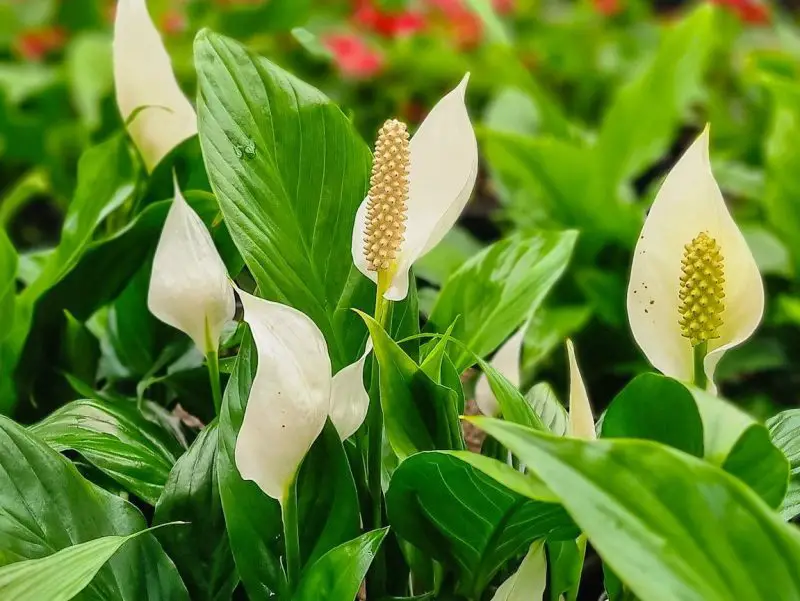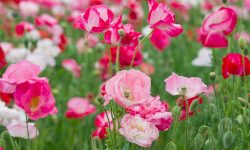Peace lilies (Spathiphyllum spp.) are beloved houseplants known for their elegant white flowers and lush, glossy green foliage. These tropical plants brighten indoor spaces while improving air quality, making them popular in homes and offices alike. However, one common question among peace lily enthusiasts is how to encourage these plants to bloom year after year consistently.
While peace lilies are relatively low-maintenance, getting them to bloom repeatedly requires understanding their natural growing habits and providing the optimal care conditions. Unlike many flowering plants, peace lilies bloom best when their basic needs for light, water, temperature, and nutrients are carefully balanced. By mastering these care techniques, you can enjoy beautiful white blooms that enhance your living space throughout the year.
Understanding the Blooming Cycle of Peace Lilies

To encourage your peace lily to bloom year after year, it helps to understand its natural growth and blooming cycle. Peace lilies are tropical understory plants native to the rainforests of Central and South America. In their natural habitat, they grow under the shade of taller trees, receiving filtered light and consistent moisture.
The characteristic white “flowers” of peace lilies are actually specialized leaf bracts called spathes, which surround a central spike known as a spadix where the true tiny flowers develop. Blooming typically occurs when the plant is mature and receives the right combination of light, moisture, and nutrients.
Peace lilies usually produce blooms during the warmer months when growth is most active, but indoor plants can bloom multiple times a year if conditions are right. Encouraging regular bloom cycles involves providing a stable environment that mimics their native tropical conditions, particularly regarding light intensity and humidity.
Providing Adequate Light to Promote Flowering
Light is one of the most critical factors influencing peace lily blooming. Although these plants tolerate low light levels, insufficient light often leads to lush foliage with few or no flowers. To encourage blooms, your peace lily needs bright, indirect light.
Placing your peace lily near an east-facing window or in a well-lit room where it receives filtered sunlight during part of the day will help stimulate flower production. Avoid direct sunlight, as this can scorch the leaves and cause stress, which inhibits blooming. If natural light is limited, consider supplementing with fluorescent or LED grow lights positioned at an appropriate distance to mimic the filtered light conditions of a rainforest understory.
Maintaining consistent light exposure throughout the growing season helps the plant allocate energy toward flower production rather than just foliage growth. It is also essential to avoid moving the plant frequently, as changes in lighting conditions can cause stress and reduce flowering.
Regulating Temperature for Consistent Blooming
Temperature plays a significant role in peace lily growth and flowering. Ideally, these plants thrive in temperatures between 65°F and 80°F (18°C to 27°C), with slightly cooler nights encouraging healthy development.
Avoid exposing peace lilies to drafts, sudden temperature fluctuations, or cold conditions below 55°F (13°C), as these can stress the plant and lead to leaf damage or loss of flower buds. Consistent, warm indoor temperatures that mimic their tropical origins create optimal conditions for repeated blooming.
During colder months, it is especially important to keep peace lilies away from windows or doors where chilly air might enter. Similarly, avoid placing the plant near heating vents or radiators that can dry out the air and cause stress.
Maintaining Proper Humidity Levels for Healthy Blooms
Peace lilies thrive in high humidity environments typical of tropical rainforests. Low indoor humidity, especially in heated or air-conditioned rooms, can negatively affect blooming by causing flower buds to dry out and drop prematurely.
To increase humidity around your peace lily, place the plant on a humidity tray filled with water and pebbles or group it with other moisture-loving plants to create a microclimate. Using a room humidifier is also an effective way to maintain consistent moisture levels in the air.
Lightly misting the leaves can temporarily raise humidity, but be cautious not to overdo it, as excessive moisture on foliage can promote fungal diseases. Keeping humidity levels between 50% and 60% supports healthy foliage and encourages prolific blooming.
Watering Practices to Encourage Frequent Blooms
Watering peace lilies properly is vital to stimulate blooming year after year. These plants prefer consistently moist but not waterlogged soil. Overwatering can lead to root rot and stress, while underwatering causes leaf drooping and reduced flowering.
A good rule of thumb is to water when the top inch of soil feels dry to the touch. Deep watering that allows excess water to drain from the pot ensures that roots receive adequate moisture. Avoid letting the plant sit in standing water, as this can suffocate the roots.
During the active growing and blooming seasons, peace lilies benefit from slightly more frequent watering to support flower development. Conversely, reduce watering in the cooler months when growth naturally slows down to prevent soggy conditions.
Fertilizing Your Peace Lily to Support Repeated Flowering
Nutrition is essential to keeping your peace lily healthy and encouraging repeat blooms. Applying a balanced, water-soluble fertilizer every 6 to 8 weeks during the growing season provides essential nutrients that support foliage and flower production.
Fertilizers with an NPK ratio such as 20-20-20 or 10-10-10 work well. However, some gardeners prefer a formula slightly higher in phosphorus, as phosphorus encourages flower bud development. Over-fertilizing can harm the plant, so it is crucial to follow recommended doses and avoid fertilizing during the plant’s dormant period.
Organic options like compost tea or diluted fish emulsion can also provide gentle feeding while improving soil health. Regular feeding combined with proper watering and lighting maximizes your peace lily’s ability to bloom repeatedly.
Repotting and Root Care for Sustained Blooming
Peace lilies prefer to be somewhat root-bound, but over time, crowded roots can limit growth and flowering potential. Repotting every 1 to 2 years in fresh, well-draining potting mix revitalizes the plant and encourages healthy root development.
Choose a container slightly larger than the current pot, ensuring good drainage to prevent waterlogging. When repotting, inspect the roots for any signs of rot or damage and trim unhealthy roots carefully.
Healthy roots absorb nutrients and water more efficiently, supporting stronger foliage and more abundant blooms. Proper root care is especially important for older plants to maintain vigor and encourage annual flowering.
Managing Common Problems That Hinder Blooming
Peace lilies can suffer from several common issues that affect their ability to bloom consistently. Yellowing leaves, browning leaf tips, or wilting can signal improper watering, low humidity, or nutrient deficiencies, all of which reduce flower production.
Pests such as spider mites, mealybugs, and aphids may also stress the plant, causing it to drop buds or fail to bloom. Regularly inspecting your plant and promptly treating infestations with insecticidal soap or neem oil helps maintain its health.
Environmental stressors like sudden temperature changes, drafts, or exposure to direct sunlight can also cause bud drop. Minimizing these stresses by providing a stable growing environment ensures your peace lily remains healthy and blooms year after year.
Encouraging Peace Lilies to Bloom Indoors During Winter
Because peace lilies are tropical plants, they can bloom indoors during winter when provided with ideal conditions. The key to encouraging winter blooming lies in maintaining consistent light, warmth, and humidity despite shorter daylight hours.
Supplemental lighting using grow lights can mimic natural sunlight, providing the energy needed for flower production. Keeping room temperatures stable between 65°F and 75°F (18°C to 24°C) with adequate humidity supports the plant during this period.
Regular watering and feeding, combined with minimal disturbance, allow peace lilies to thrive and bloom indoors, bringing life and brightness during the colder months when many other plants lie dormant.
FAQs about How to Make a Peace Lily Bloom
Why Is My Peace Lily Not Blooming?
Peace lilies may not bloom due to insufficient light, overwatering, or low humidity. Ensuring bright indirect light and proper watering encourages flowering.
How Often Do Peace Lilies Bloom Indoors?
With proper care, peace lilies can bloom multiple times a year, often producing flowers during spring and summer when conditions are optimal.
What Is the Best Light for Peace Lily Blooming?
Bright, indirect sunlight is ideal. Direct sun can damage leaves, while too little light inhibits flower formation.
How Should I Water My Peace Lily to Promote Blooms?
Water when the top inch of soil feels dry, keeping soil moist but not soggy to avoid root rot and stress.
Can I Use Fertilizer to Make My Peace Lily Bloom More Often?
Yes, applying a balanced fertilizer every 6-8 weeks during growing seasons supports healthy growth and encourages flowering.
Final Thoughts on How to Make a Peace Lily Bloom Year After Year
Making a peace lily bloom year after year requires patience, consistency, and an understanding of its natural growing needs. Providing bright, indirect light, maintaining stable temperatures and humidity, watering correctly, and feeding regularly create the ideal environment for repeated flowering.
Repotting and root care also play important roles in sustaining long-term health and bloom potential. By preventing common problems and minimizing stress, you give your peace lily the best chance to reward you with elegant, long-lasting blooms season after season.
With proper care, your peace lily will continue to be a graceful, flowering centerpiece that enhances your home’s ambiance while purifying the air. The satisfaction of seeing it bloom year after year is a testament to the nurturing environment you create for this beautiful tropical plant.






